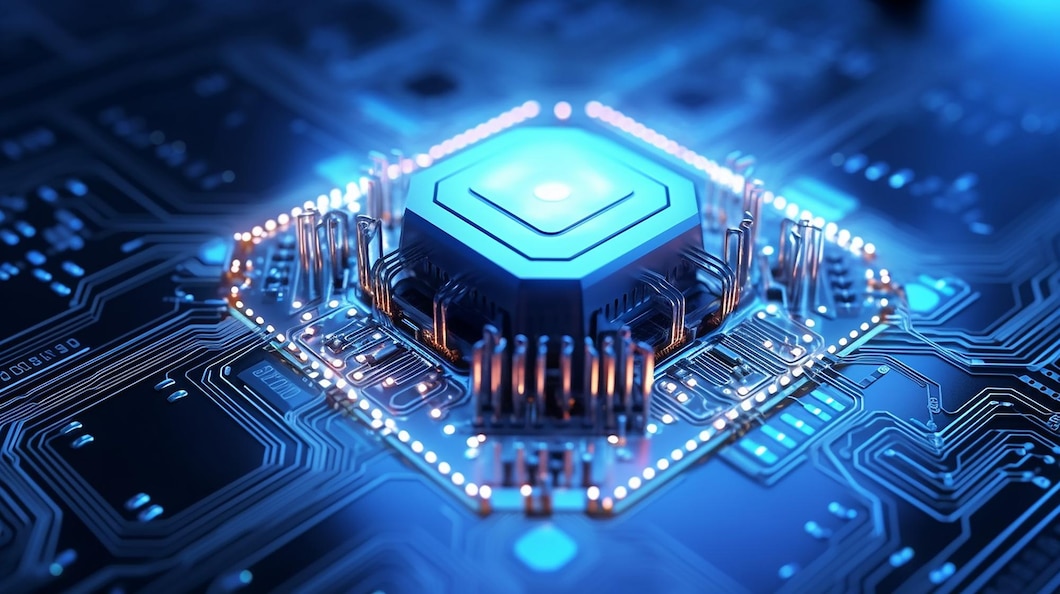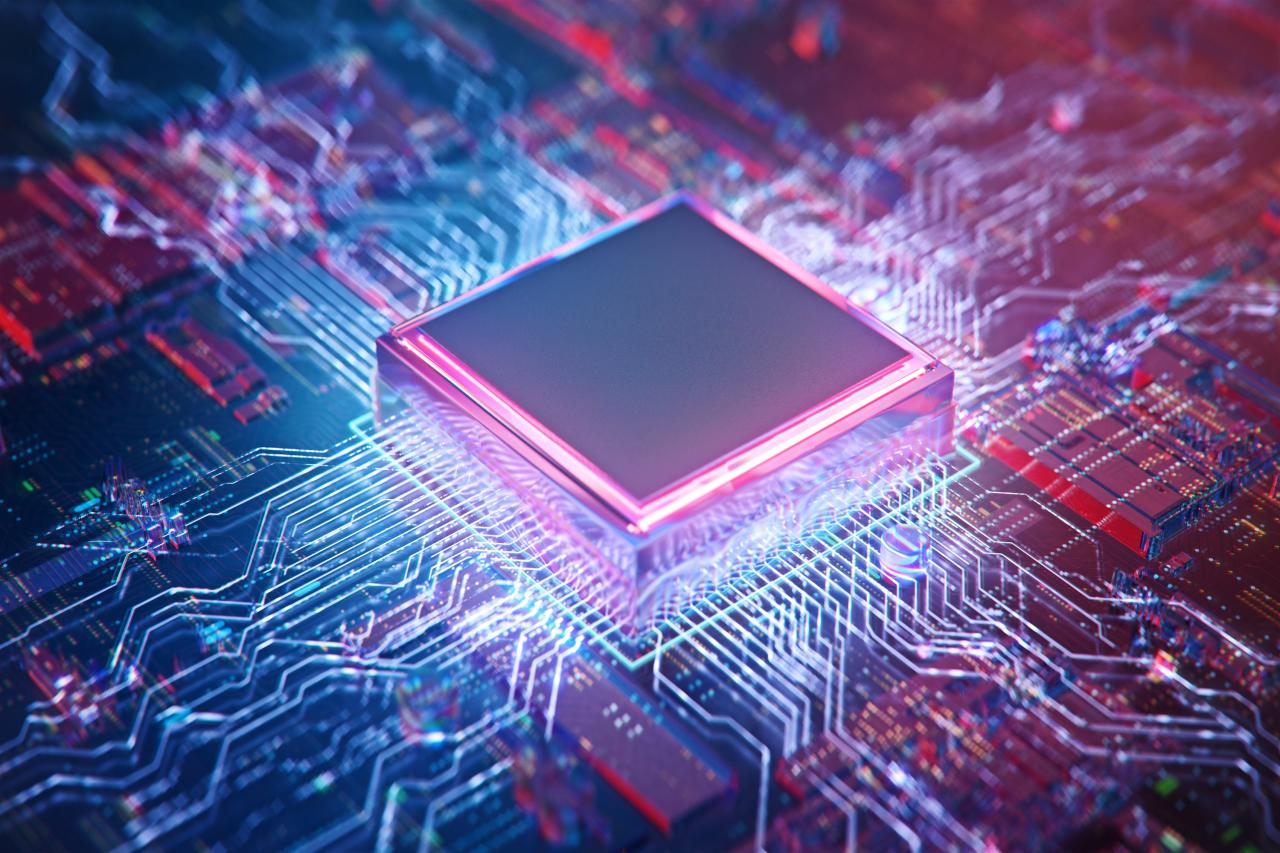Gaming Hardware Innovations Explored: Next-Gen Power
The world of gaming is in a perpetual state of flux, driven by an insatiable demand for more immersive experiences, breathtaking visuals, and lightning-fast performance. At the heart of this evolution lies gaming hardware innovation, a relentless pursuit of cutting-edge technology that pushes the boundaries of what’s possible. From the raw processing power of the latest CPUs and GPUs to the nuanced tactile feedback of advanced controllers and the sprawling realism of virtual reality headsets, every component plays a crucial role in shaping the future of interactive entertainment. What was once considered bleeding-edge technology becomes mainstream in a blink, constantly redefining player expectations and developer ambitions.
This comprehensive article delves deep into the most significant and anticipated advancements in gaming hardware, dissecting the core technologies that fuel these innovations, and exploring their transformative impact on gameplay, immersion, and the broader gaming ecosystem. We will examine how AI, advanced manufacturing, and new material sciences are converging to create devices that not only run games but transport players directly into digital worlds. Our journey will highlight the current leaders, emerging trends, and the future potential of these incredible machines, offering invaluable insights for enthusiasts, developers, and anyone keen to understand the driving force behind modern gaming.
Why Hardware Innovation Matters

For gamers, hardware innovation isn’t just about faster speeds or prettier graphics; it’s about unlocking new dimensions of play. Every leap in processing power, memory, or display technology translates directly into more complex game worlds, more realistic physics, more intricate AI, and more fluid, responsive gameplay. Developers constantly push the limits of existing hardware, and when they hit a ceiling, it’s new hardware that breaks through, enabling them to realize previously impossible creative visions.
The cycle is symbiotic: game developers demand more from hardware, driving manufacturers to innovate, and in turn, new hardware capabilities inspire developers to create even more ambitious games. This constant push-and-pull has led to an incredible acceleration in technological advancements within the gaming industry, far outpacing many other sectors in terms of raw computational demands and innovation in user experience. From the early days of pixelated sprites to today’s hyper-realistic open worlds, the journey has been defined by revolutionary leaps in hardware.
Core Engines of Evolution
The prowess of modern gaming hardware is built upon several foundational technological pillars that are constantly being refined and reinvented.
A. Central Processing Units (CPUs)
The “brain” of any gaming system, responsible for everything from game logic and AI to physics calculations.
- Multi-Core and Thread Optimization: Modern CPUs feature numerous cores and threads, allowing them to handle multiple game processes simultaneously, crucial for complex open-world games and background tasks. Processors like Intel’s Core i9 series and AMD’s Ryzen 9 series boast high core counts and impressive clock speeds.
- Increased Clock Speeds and IPC (Instructions Per Cycle): Higher clock speeds mean faster execution of individual instructions, while improved IPC means more work done per clock cycle, leading to overall performance gains.
- Integrated AI Accelerators: Newer CPUs are beginning to incorporate dedicated AI hardware (like Intel’s NPU or AMD’s Ryzen AI) that can offload AI-related tasks, such as enhancing in-game AI or supporting AI-driven upscaling technologies, potentially freeing up the main CPU cores.
- Cache Enhancements: Larger and smarter cache memory close to the CPU cores reduces latency for frequently accessed data, speeding up game performance. AMD’s 3D V-Cache technology is a prime example, significantly boosting gaming performance on certain CPUs.
B. Graphics Processing Units (GPUs)
The “heart” of gaming visuals, dedicated to rendering graphics, processing textures, and executing complex shading algorithms.
- Ray Tracing: A revolutionary rendering technique that simulates the physical behavior of light, producing incredibly realistic reflections, shadows, and global illumination. Modern GPUs from NVIDIA (RTX series) and AMD (Radeon RX series) feature dedicated RT cores for accelerated ray tracing.
- AI-Powered Upscaling (DLSS, FSR, XeSS): Technologies like NVIDIA’s DLSS (Deep Learning Super Sampling), AMD’s FSR (FidelityFX Super Resolution), and Intel’s XeSS (Xe Super Sampling) use AI to render games at a lower resolution and then intelligently upscale them to higher resolutions, resulting in sharper images with significantly improved frame rates. This is arguably one of the most impactful innovations in recent GPU history.
- Increased VRAM (Video Random Access Memory): Games are becoming more graphically intensive, requiring larger textures and more complex scenes, necessitating larger amounts of VRAM on GPUs for optimal performance.
- Advanced Shader Architectures: New GPU architectures (like NVIDIA’s Ada Lovelace or AMD’s RDNA 3) include optimized shader units that process graphical instructions more efficiently, leading to faster frame rates and more detailed visuals.
C. Storage Solutions: SSDs (Solid State Drives)
The evolution of storage has fundamentally changed game loading times and asset streaming.
- NVMe SSDs: Non-Volatile Memory Express (NVMe) SSDs, especially those leveraging PCIe Gen4 and soon Gen5 interfaces, offer exponentially faster read and write speeds compared to traditional HDDs and even older SATA SSDs. This drastically reduces loading screens from minutes to mere seconds.
- DirectStorage/RTX I/O: Technologies like Microsoft’s DirectStorage (optimized for NVMe SSDs) and NVIDIA’s RTX I/O allow games to directly stream assets from storage to the GPU, bypassing the CPU bottleneck. This enables larger, more detailed open worlds with virtually no loading screens and faster asset pop-in.
- Memory Expansion Card Solutions: Consoles like the Xbox Series X/S utilize proprietary expansion cards that match internal SSD speeds, offering seamless storage upgrades.
D. RAM (Random Access Memory)
While often overlooked, faster and more efficient RAM is crucial for overall system responsiveness and game performance.
- DDR5 and Beyond: The transition to DDR5 RAM provides higher bandwidth and improved efficiency compared to DDR4, allowing the CPU to access game data faster.
- Optimal Speed and Latency: The balance between RAM speed (MHz) and latency (CL timing) significantly impacts CPU performance, especially for games that are sensitive to data access times.
The Gaming Ecosystem
Beyond the core components, innovation is rampant across various segments of the gaming hardware market, enhancing how we play.
A. Gaming Consoles
Current-generation consoles continue to push boundaries with optimized architectures.
- PlayStation 5 (PS5): Features a custom AMD RDNA 2 GPU, an 8-core Zen 2 CPU, and a custom ultra-high-speed SSD with a dedicated I/O complex, enabling incredibly fast loading times and supporting advanced graphical features like ray tracing. The DualSense controller’s haptic feedback and adaptive triggers offer a new layer of tactile immersion.
- Xbox Series X/S: Also powered by custom AMD RDNA 2 and Zen 2 architecture, with the Series X matching PS5’s raw power and the Series S offering a smaller, more affordable digital-only option. Both feature Xbox Velocity Architecture, leveraging fast NVMe SSDs and DirectStorage for rapid loading.
- Nintendo Switch (and potential successors): While not competing on raw graphical power, Nintendo’s innovation lies in its hybrid nature (console and handheld) and unique Joy-Con controllers, offering flexible play styles and social gaming. Future iterations are expected to enhance performance while maintaining portability.
B. Gaming PCs
The PC remains the pinnacle of gaming performance, offering unparalleled customization and flexibility.
- High-End Graphics Cards: The latest GPUs from NVIDIA and AMD continue to lead in raw performance, pushing resolutions (4K, 8K), frame rates (144Hz+), and visual fidelity to extreme levels.
- Enthusiast-Grade CPUs: Powerful multi-core processors ensure there’s no bottleneck for even the most demanding games.
- Advanced Cooling Solutions: Liquid cooling, large air coolers, and sophisticated case designs are essential for dissipating heat from high-performance components, allowing for sustained performance and overclocking.
- Peripherals: High refresh rate monitors (240Hz, 360Hz, 540Hz), low-latency mechanical keyboards, and high-precision gaming mice are crucial for competitive play.
C. Handheld Gaming PCs
A rapidly growing segment, bringing PC gaming on the go.
- Steam Deck (Valve): A custom AMD APU (Accelerated Processing Unit) powers this Linux-based handheld, capable of running a vast library of PC games at respectable settings on its integrated screen.
- ROG Ally (ASUS) and Lenovo Legion Go: These Windows-based handhelds offer more raw power and flexibility, essentially miniature gaming PCs with integrated controllers and larger screens, sometimes supporting detachable controllers and external GPUs.
- AYANEO/GPD Devices: Smaller manufacturers continue to push the envelope with various handheld form factors and performance tiers.
D. Virtual Reality (VR) Headsets
VR continues its march towards mainstream adoption, offering unparalleled immersion.
- Standalone VR: Devices like the Meta Quest 3 offer high-resolution displays, improved tracking, and standalone processing power, eliminating the need for a PC or external sensors, making VR more accessible. The mixed reality capabilities, blending virtual elements with the real world, are a significant leap.
- PC VR Headsets: High-end PC VR headsets (e.g., Valve Index, HP Reverb G2) offer superior visual fidelity, wider fields of view, and more precise tracking, powered by powerful gaming PCs.
- PlayStation VR2 (PSVR2): For the PS5, this headset offers high-resolution OLED displays, haptic feedback in the headset, eye-tracking, and intuitive Sense controllers for a deeply immersive console VR experience.
- Apple Vision Pro (Spatial Computing): While not solely a gaming device, its advanced display technology, eye-tracking, and gesture controls could set new standards for immersive computing, potentially influencing future gaming AR/VR.
E. Advanced Peripherals
Beyond the core systems, peripherals are evolving to provide deeper immersion and competitive advantages.
- Haptic Feedback Controllers: Controllers like the PS5’s DualSense utilize sophisticated haptic motors and adaptive triggers to simulate in-game sensations (e.g., feeling the tension of a bowstring, the texture of a surface, the impact of a gunshot).
- High Refresh Rate and Low Latency Monitors/TVs: Displays with refresh rates of 144Hz, 240Hz, or even 540Hz, combined with low response times and technologies like Variable Refresh Rate (VRR/FreeSync/G-Sync), provide incredibly smooth and tear-free visuals, crucial for competitive gaming.
- Gaming Keyboards and Mice: Mechanical keyboards with customizable switches and high-DPI (dots per inch) gaming mice with ultra-low latency are standard for serious PC gamers. Innovations include magnetic switches, wireless charging mousepads, and customizable macros.
- Sim Racing Rigs and Flight Sticks: Highly specialized peripherals that offer unparalleled realism for simulation genres, including force feedback steering wheels, sophisticated pedal sets, and multi-axis flight controllers.
The Broader Impact and Future Outlook

The innovations in gaming hardware have ripple effects far beyond entertainment, influencing other industries and shaping future technology.
A. Influencing AI and Data Processing
The demand for complex game AI and real-time ray tracing drives advancements in GPU architecture, which in turn benefits AI research, machine learning, and high-performance computing (HPC) for scientific simulations and data analysis.
B. Driving Display Technology
The need for higher refresh rates, lower latency, and brighter, more vibrant displays in gaming pushes the boundaries of monitor, TV, and VR headset technology, leading to benefits across all visual media.
C. Advancing Connectivity
The requirements for low-latency online gaming and seamless cloud streaming (e.g., Xbox Cloud Gaming, GeForce NOW) accelerate the development and adoption of faster, more reliable internet infrastructure (5G, Wi-Fi 6E).
D. Enhancing Accessibility
Hardware innovations are increasingly incorporating features that make gaming more accessible to players with disabilities, such as the Xbox Adaptive Controller and customizable haptic feedback.
E. Augmented and Mixed Reality Evolution
The advancements in VR headsets, particularly those with passthrough cameras for mixed reality, are laying the groundwork for future AR glasses and spatial computing devices that could revolutionize work, education, and social interaction.
What to Expect from Gaming Hardware
The pace of innovation shows no signs of slowing down. Here’s a glimpse into the potential future of gaming hardware:
A. Continued AI Integration
AI will become even more integral to gaming hardware, not just for upscaling and in-game AI, but potentially for dynamic content generation, personalized gameplay experiences, and intelligent performance optimization at a hardware level.
B. Hyper-Realistic Graphics at Scale
Ray tracing will become standard, running at higher resolutions and frame rates with less performance overhead. Path tracing, an even more advanced form of light simulation, will become more common, leading to truly indistinguishable real-time graphics.
C. Pervasive Haptic Feedback
Expect haptic technology to move beyond controllers into gaming chairs, vests, and even full-body suits, providing tactile feedback that matches on-screen actions with unprecedented realism.
D. Mainstream AR/MR Gaming
As AR glasses become more compact and capable, gaming experiences will seamlessly blend with the real world, offering new social and interactive possibilities that don’t require full isolation from surroundings.
E. Neuromorphic Computing and Quantum Gaming (Long-term)
While distant, research into neuromorphic chips (mimicking the human brain’s structure for AI) and even quantum computing could unlock entirely new paradigms for game complexity, AI, and simulation beyond current capabilities.
F. Sustainable Hardware Design
Increasing focus on energy efficiency, the use of recycled materials, and modular designs for easier repair and upgrades will become more prevalent as the industry addresses its environmental impact.
G. More Advanced Display Technologies
Further development in micro-LED, QD-OLED, and light field displays will offer even better contrast, brightness, and potentially glasses-free 3D experiences, revolutionizing how we view games.
Conclusion
The exploration of gaming hardware innovation reveals a dynamic and exhilarating frontier where engineering prowess meets boundless creativity. From the raw computational power within our consoles and PCs to the intricate tactile responses of our controllers and the enveloping visuals of our VR headsets, every technological advancement opens new doors for developers and players alike. These innovations are not just about faster load times or shinier graphics; they are about deepening immersion, broadening accessibility, and enabling entirely new forms of interactive storytelling and competitive play.
As this relentless cycle of innovation continues, driven by demand for ever more realistic and engaging experiences, the lines between digital and physical will continue to blur. The hardware we use today, and the devices yet to be unveiled, are not merely tools for entertainment; they are the very engines propelling the future of digital interaction, setting benchmarks that inspire advancements across countless other technological domains. For anyone passionate about the cutting edge, the world of gaming hardware remains a thrilling testament to human ingenuity and the infinite possibilities of play.







